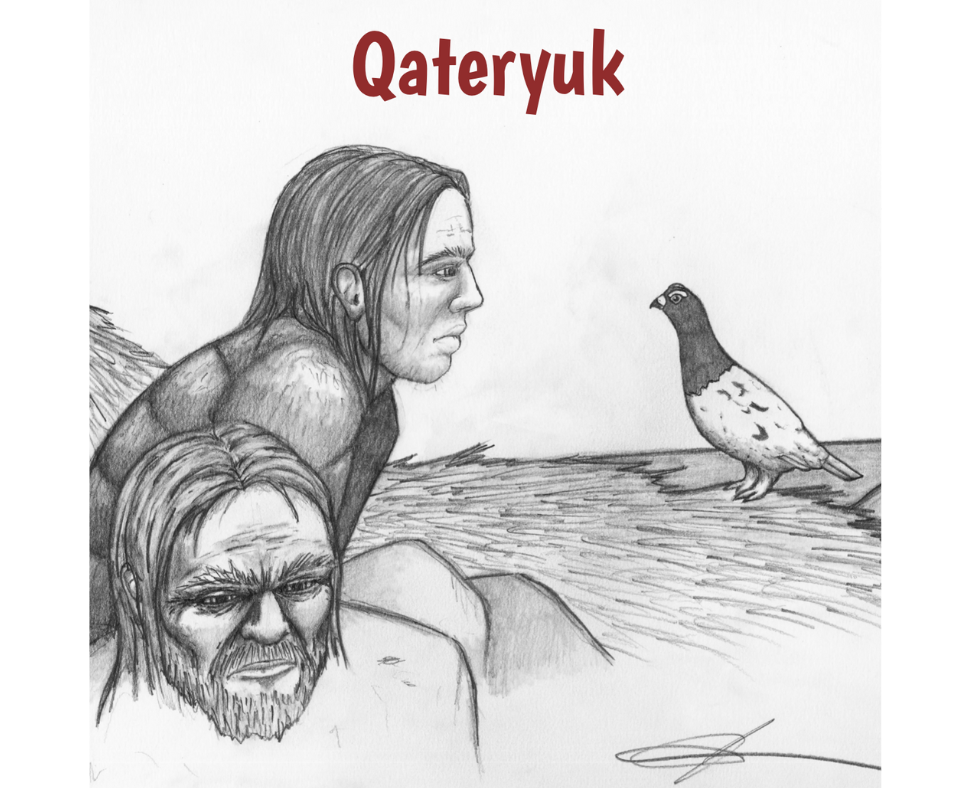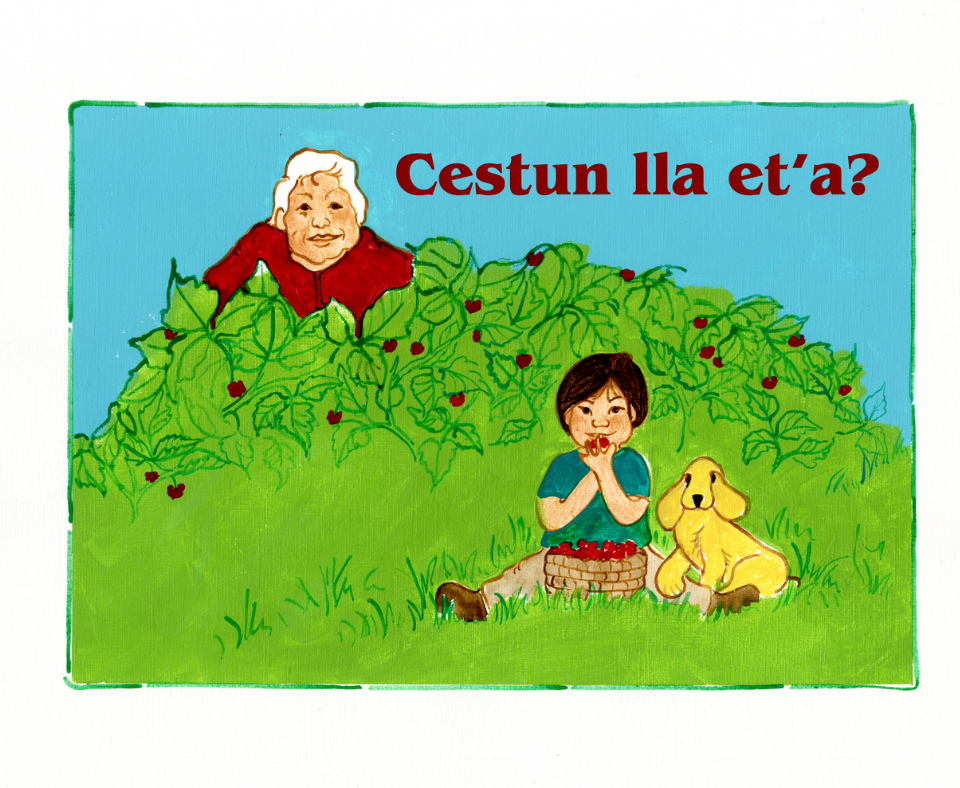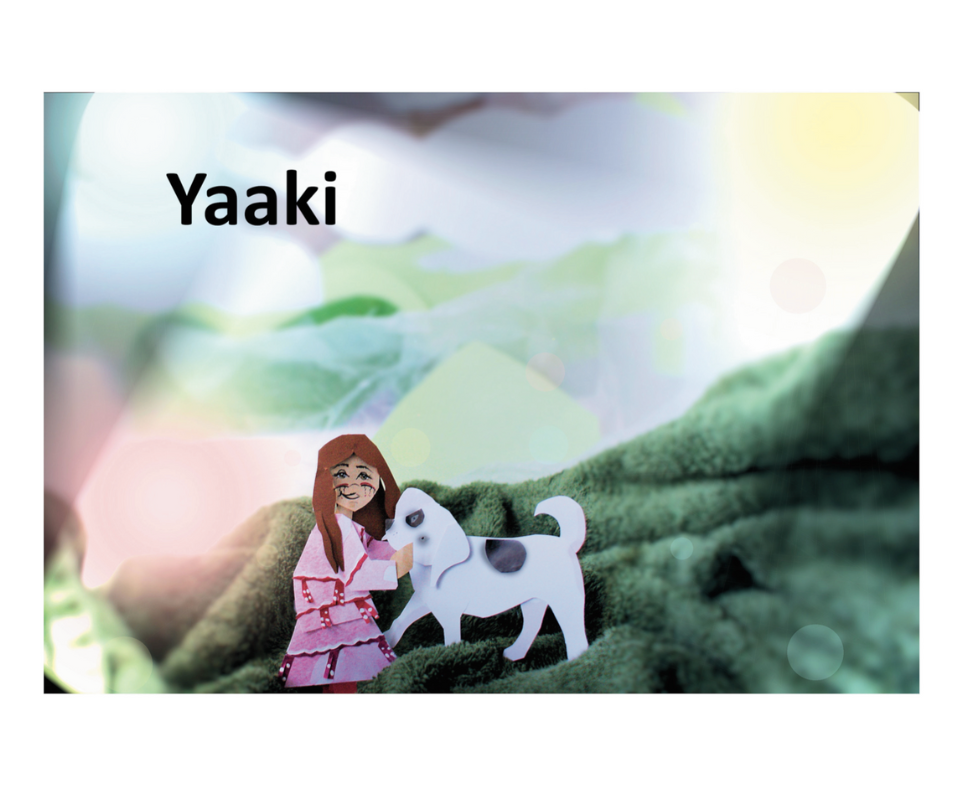We’ve turned our visitors’ most frequently asked questions about the Alutiiq world into a set of short cultural lessons. Each one-page lesson features a topic in Alutiiq language, culture, or history. Learn about everything from sod houses to whaling, the arts, and the Alutiiq universe. Produced with support from the Institute for Museum and Library Services and the Exxon Valdez Oil Spill Trustee Council.
Publications
Our publications help to tell the Alutiiq story and connect all people with accurate, accessible information on the Alutiiq world. The publications shared here include digital resources. To purchase paper copies of these and other titles, please visit the books section of the Museum Store.
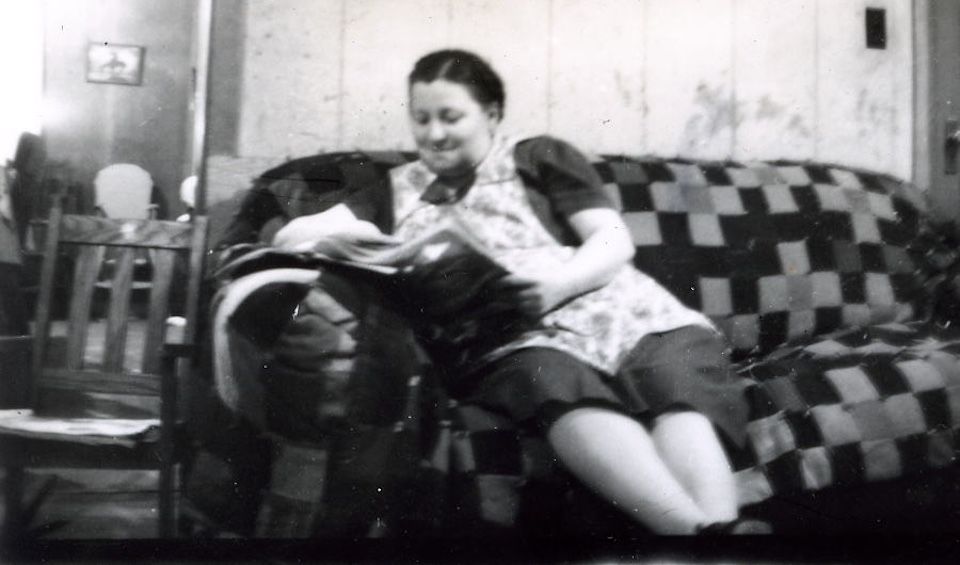
Mrs Setze reading, Ouzinkie, ca. 1950. Tim and Norman Smith Collection.
Imaken Ima’ut
From the Past to the Future
SEVENTY-FIVE HUNDRED YEARS OF KODIAK ALUTIIQ/SUGPIAQ HISTORY
This five-chapter book explores Kodiak Alutiiq history from the shaping of the Alutiiq homeland by glaciers to the growth of ancestral villages, the suppression of cultural traditions by Western settlers, and the cultural renaissance. Learn about the roots of Alutiiq culture, the forces that shaped Kodiak’s communities, and how an Alutiiq way of life continues.
Written by Alutiiq historians and Kodiak archaeologists with over two hundred images from the Alutiiq Museum’s collections.
Winner of the 2025 Alaska Anthropological Association’s Outstanding Current Contribution Award.

Publications
- Alutiiq Orthography: Kodiak Dialect
- Alutiiq Traditions
- Atkuk—How to Make an Alutiiq Parka
- Coloring Alutiiq
- Coloring Fish
- Conversational Phrasebook
- Imaken Ima’ut—From the Past to the Future
- Iqsanim Ancirsuutii — Iqsani’s Trout Hook
- Kodiak Alutiiq Language Textbook
- Nacaq — How To Make A Headdress
- Naut’staarpet — Our Plants
- Neq’rkat — The Wild Foods Cookbook
- Pililita! — Let’s Create!
- QBooks
- Suumacirpet — Our Way of Living
- Unigkuat — Kodiak Alutiiq Legends
- Uswitusqaq’s Dream
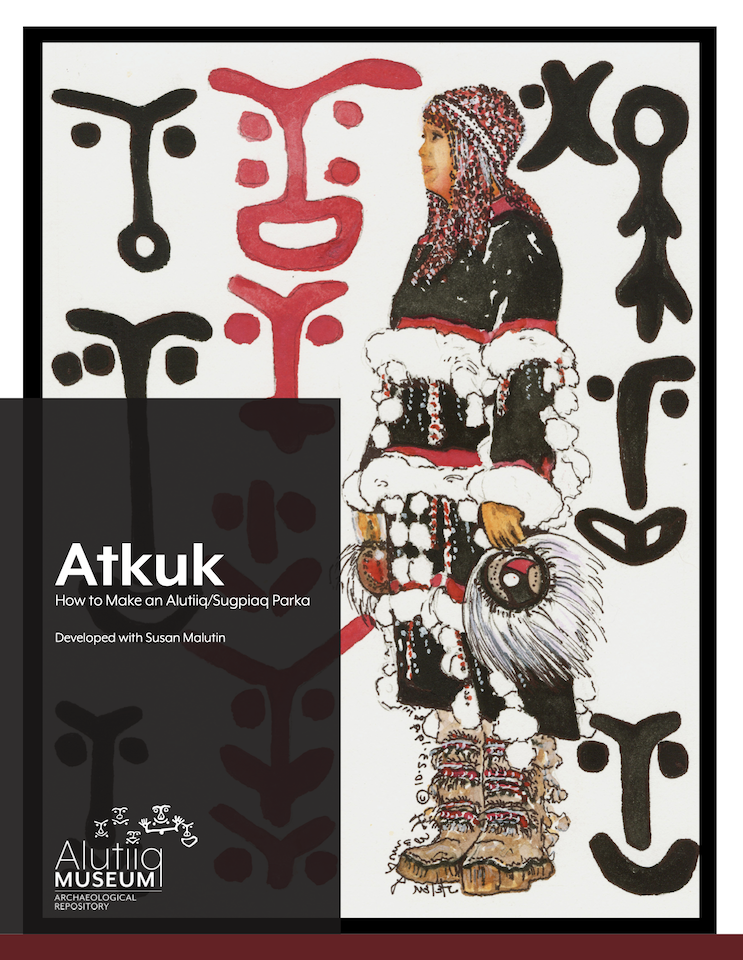
Atkuk
How to Make an Alutiiq/Sugpiaq Parka
The snow falling parka is an iconic piece of Kodiak Alutiiq clothing. For hundreds of years, Alutiiq people have worn black garments, decorated with red bands and tufts of white fur. Now you can learn to make a fabric version. Open this booklet for step-by-step instructions. Find a supply list, measurements, and sewing directions. It’s all provided by Elder Susan Malutin and accompanied by online video tutorials.
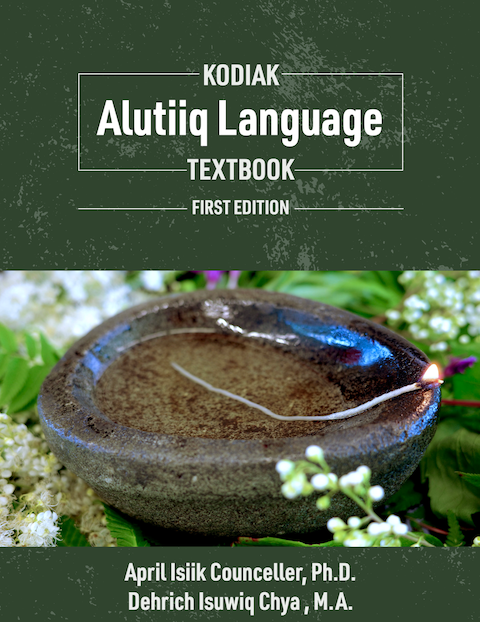
Kodiak Alutiiq Language Textbook
Designed for high school and college students, the Kodiak Alutiiq Language Textbook will take you on an exciting journey into one of Alaska’s Indigenous languages. This 230-page publication features 15 chapters that explore the unique sounds, grammar, and vocabulary of Alutiit’stun–the language of Kodiak’s Native community. Each chapter includes engaging lessons with numerous example words and sentences, and worksheets. Produced by the Sun’aq Tribe of Kodiak with support from the Alutiiq Museum.
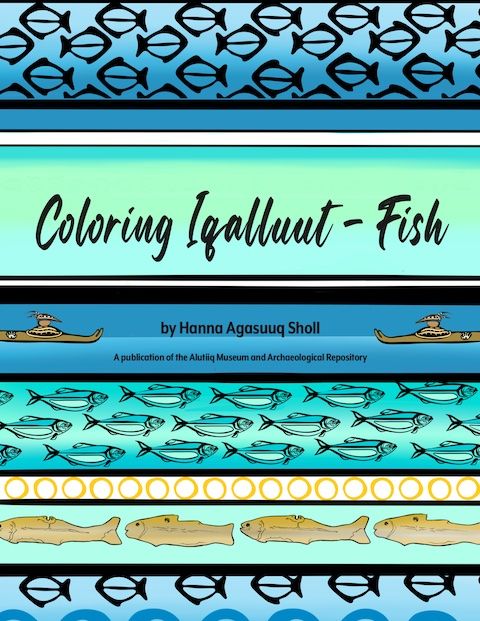
Coloring Fish
For thousands of years, Kodiak’s salmon, cod, herring, halibut, and rockfish have fed Alutiiq families. But how did Alutiiq ancestors catch fish and what fish are important today? Open this coloring book to explore some Alaskan fish and Alutiiq fishing practices.
Created by Hanna Sholl, Catherine West, and the Alutiiq Museum with funding from the North Pacific Research Board and Boston University.
“This informative and creative production is more than a coloring book; it is a guide for learning about seasonal subsistence practices and the Alutiiq core value of stewardship in caring for the natural world.” –Kristine King, Kodiak Educator

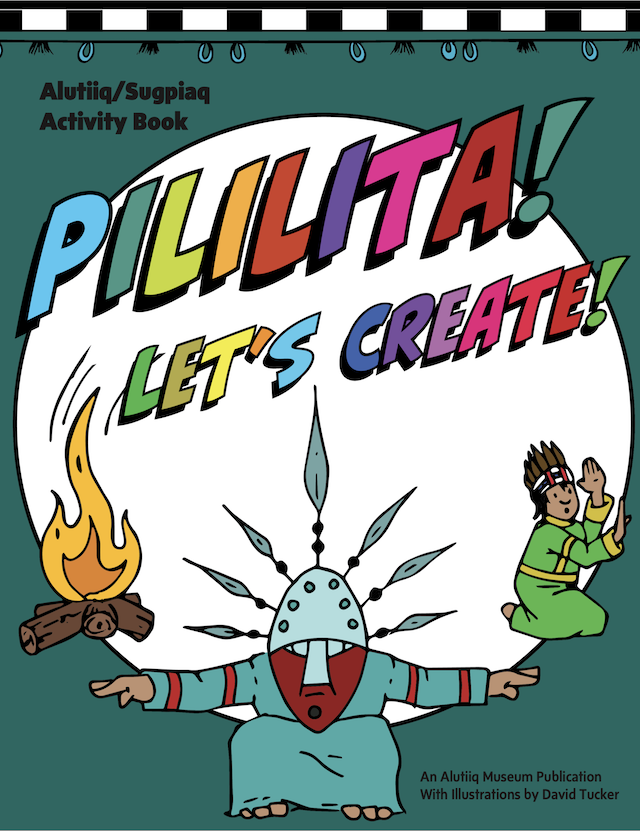
LLATUUMALUTEN! – BEWARE!
The use of the book may result in fun (and learning too)!
Get out your marker, scissors, and imagination and prepare to explore the Alutiiq world! Pililita! – Let’s Create! is 60-pages of coloring pages, puzzles, crafts, games, and recipes inspired by Kodiak’s Native culture. Send a message with pictographs, play Alutiiq word games, make paper dolls, create a tea party and much more. Designed especially for youth ages 8 to 12, but fun for anyone interested in the Alutiiq world. Featuring drawings by Alutiiq artist David Tucker. Produced with support from the Munartet project and the Alaska State Council on the Arts.
Watch for a downloadable page from this book each month.

Nacaq—How To Make A Headdress
Use this step-by-step guide to make your own beaded headdress—a nacaq. This free publication includes a supply list, diagrams, photographs, and written directions to help you transform beads, leather, and thread into an Alutiiq/Sugpiaq nacaq. Find video tutorials accompanying this book on the beading page of this website or the Alutiiq Museum’s Vimeo channel. Produced with assistance from artist Kayla Dermott with support from the Sun’aq Tribe of Kodiak and the US Bureau of Indian Affairs.
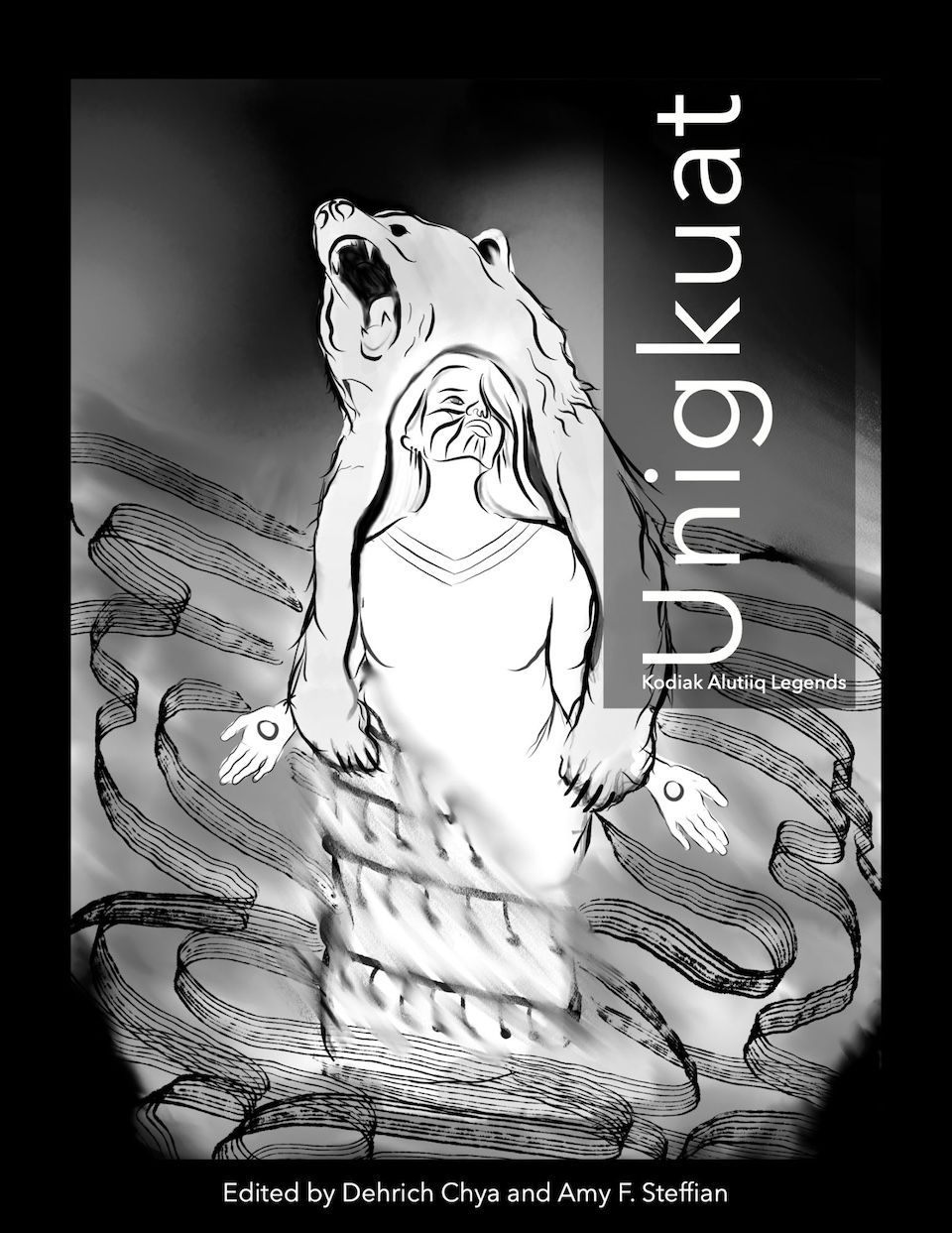
Unigkuat—Kodiak Alutiiq Legends
Action and mystery, long journeys, and valuable lessons—these are the ingredients of Alutiiq legends. In a village terrified by an enormous octopus, people work together to kill the beast. A young man apprentices to a whaler and learns mysterious secrets about hunting the largest sea mammals. A community mistreats Raven and his grandmother, and the people die of starvation. This book shares sixty-two traditional tales from Alaska’s Kodiak Archipelago, compiled from stories told by Alutiiq Elders over the past 150 years.
In each legend, readers learn about the Alutiiq world—the origins of the moon and the sun, how animals can sometimes appear as people, the importance of respectful hunting, and most of all how generosity, bravery, and perseverance are essential to a happy and successful life. Illustrated with images by community artists with support from the Munartet Project and the Alaska State Council on the Arts.
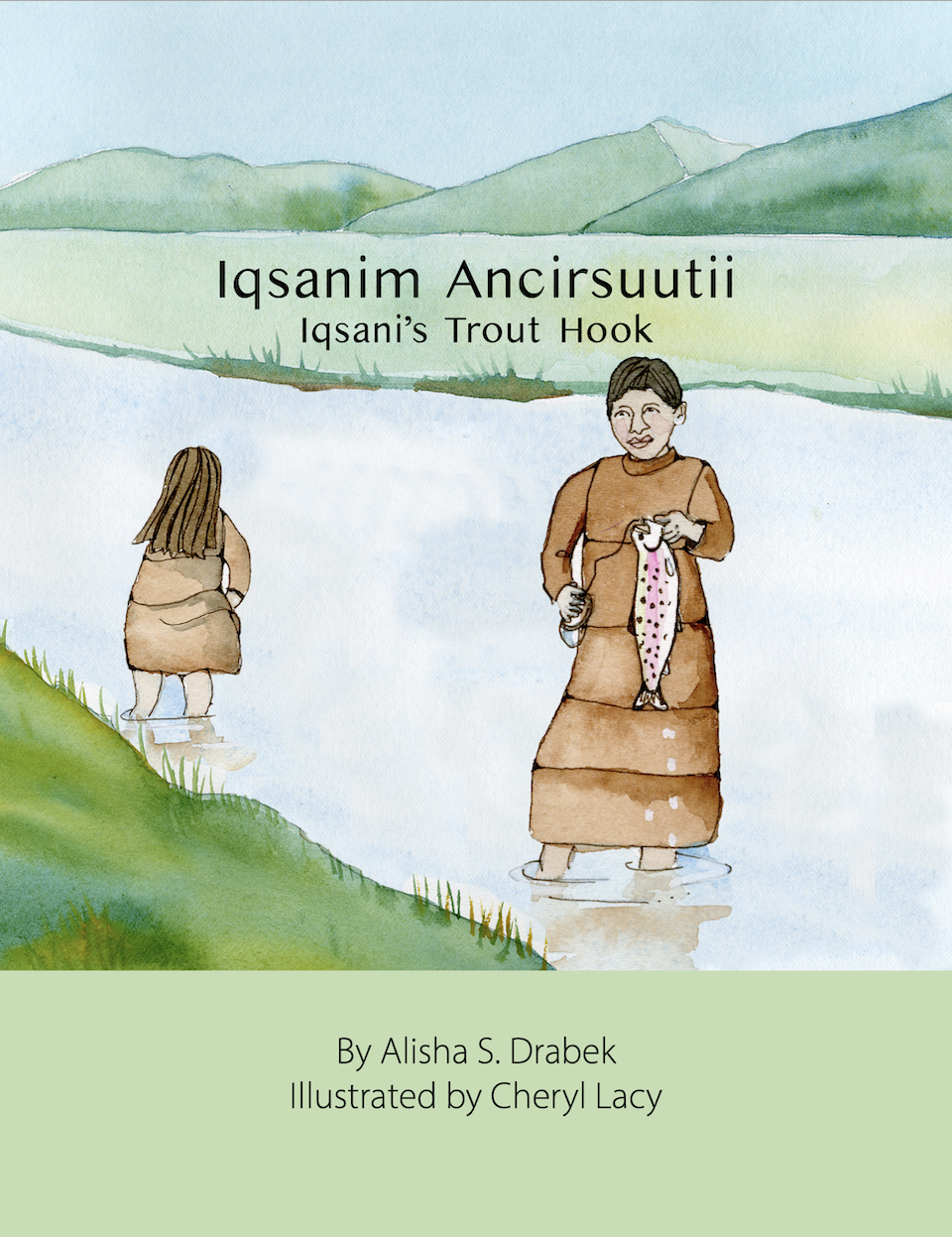
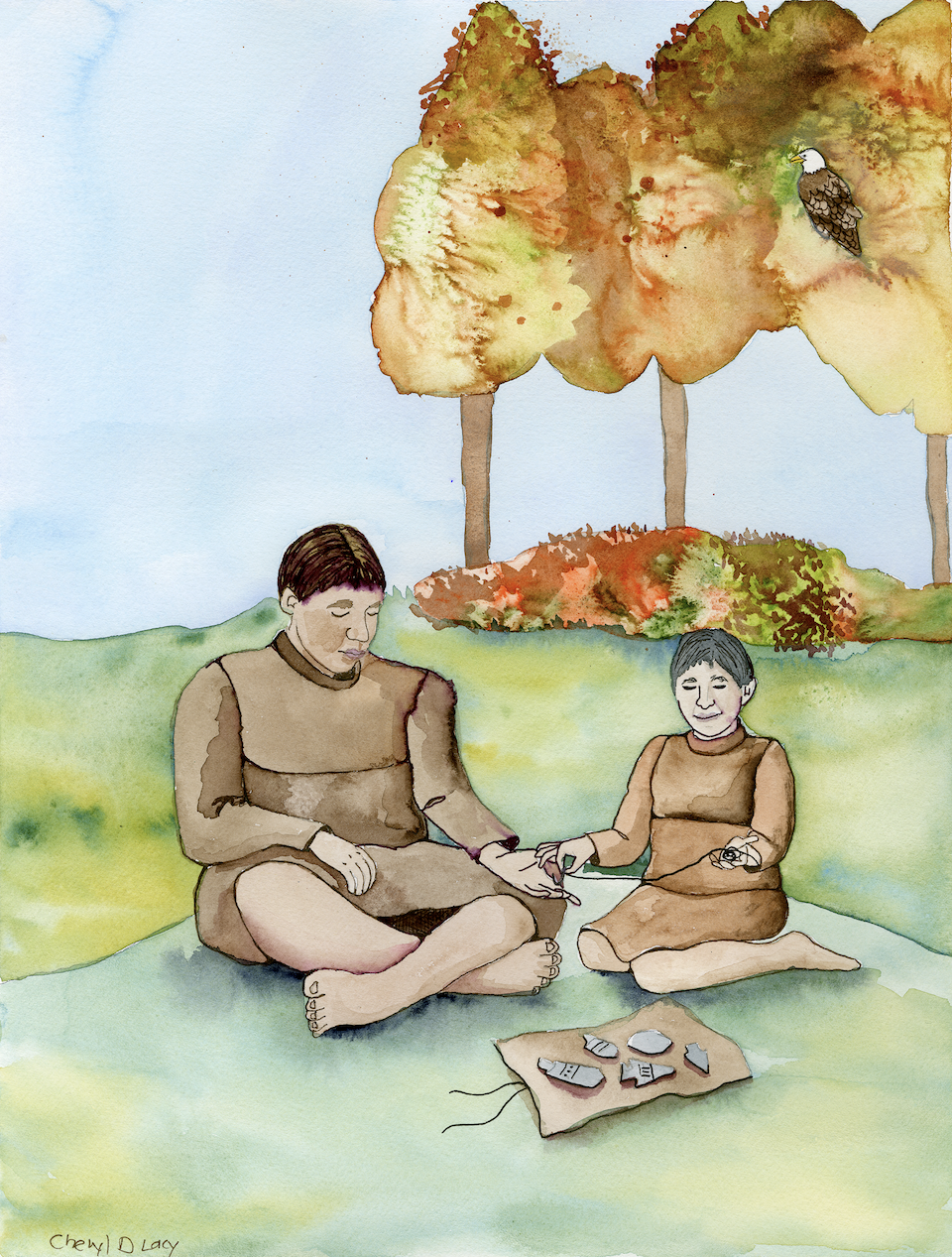
Iqsanim Ancirsuutii — Iqsani’s Trout Hook
Qanitiisa and her brother Iqsani are young, but they have important jobs at fish camp. There are salmon to carry, a fire to feed, plants to collect, and trash to dump. Follow these Alutiiq children as they help their parents with fall fishing and have lots of fun along the way.
While Qanitiisa and Iqsani are imagined, their world is real. Their story is set in an old Alutiiq fish camp on Kodiak’s Karluk River. Archaeologists studied the camp, and their finds provided clues about Alutiiq life three hundred years ago. Enjoy the story and then learn about the sod houses, artifacts, and animal remains that inspired the story. Written by Alisha Drabek, with illustrations by Cheryl Lacy. A publication of the Koniag Cultural Library. Produced by the Alutiiq Museum with a grant to Koniag, Inc. from the Institute for Museum & Library Services.
“This unique book takes readers on a journey that connects with family values, traditions, and history—all based around an actual artifact found at an archaeological site on Karluk River . . . a heartfelt, moving, educational treasure that will be loved by readers of all ages especially those with interest in Alaska, Native cultures, or archaeology . . .” —Shelly Lawson, Educator
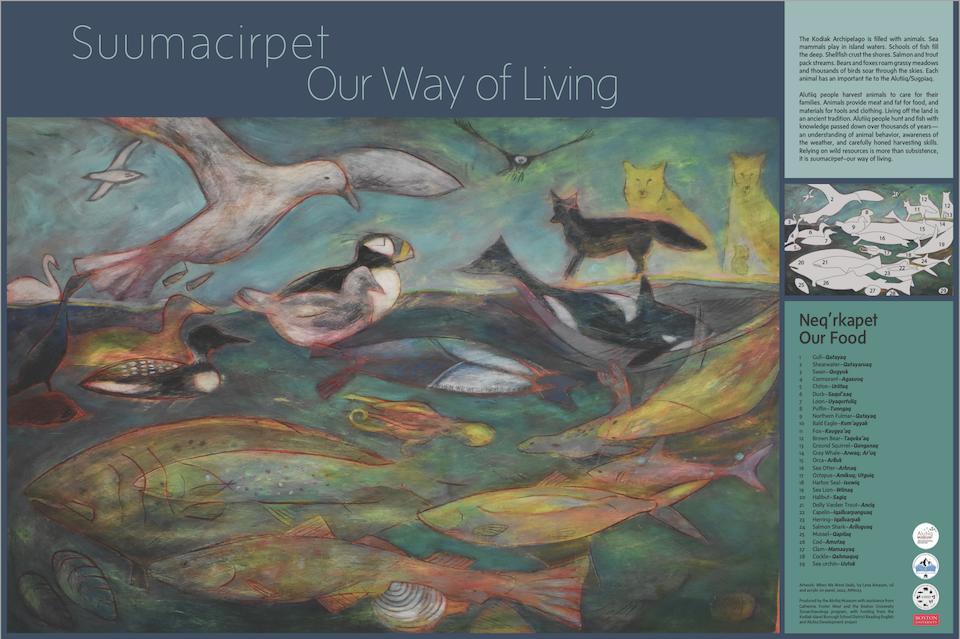
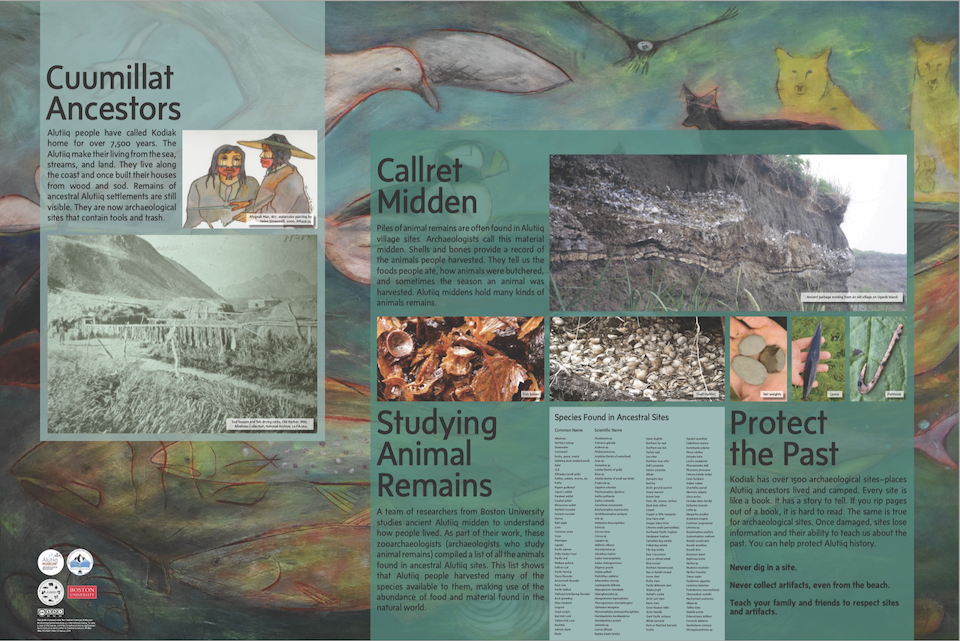
Suumacirpet — Our Way of Living
The Kodiak Archipelago is filled with animals. Sea mammals play in island waters. Schools of fish fill the deep. Shellfish crust the shores. Salmon and trout pack streams. Bears and foxes roam grassy meadows and thousands of birds soar through the skies. Each animal has an important tie to the Alutiiq/Sugpiaq.
Alutiiq people harvest animals to care for their families. Animals provide meat and fat for food and materials for tools and clothing. Living off the land is an ancient tradition. Alutiiq people hunt and fish with knowledge passed down over thousands of years an understanding of animal behavior, awareness of the weather, and carefully honed harvesting skills. Relying on wild resources is more than subsistence, it is suumacirpet–our way of living. Poster art by Lena Amason produced with assistance from Catherine West and the Boston University Zooarchaeology program, with funding from the Kodiak Island Borough School District Reading English and Alutiiq Development project.
Naut’staarpet — Our Plants
Explore Kodiak’s forest and meadows with this colorful guide to Alutiiq plant harvesting and use. Naut’staarpet-Our Plants, A Kodiak Alutiiq Plantlore was written by anthropologist Priscilla Russell. In 1990, to prepare for the book, Russell visited all of Kodiak’s communities, where she discussed, collected, and prepared plants with culture bearers. Filled with colorful photographs and first-hand information, this beautiful book is an excellent resource.

Coloring Alutiiq
Hanna Sholl’s Coloring Alutiiq pairs Alutiiq clothing with the animals and tools used in its manufacture. Learn about the Alutiiq world and practice Alutiiq vocabulary as you add color to these beautiful drawings. Produced with support from The CIRI Foundation and the City of Kodiak.
-
Caribou Skin Parka & Boots
-
Cormorant Skin Parka & Bird Hunting Tools
-
Gutskin Rain Coat & Bear
-
Headdress, Dancer & Drum
-
Hunting Gear & Sea Lion
-
Jewelry & Sewing Tools
-
Parka & Caribou
-
Puffin Skin Parka & Puffin Beak Rattle
-
Seal Hunting Gear & Seal
-
Squirrel Skin Parka & Ground Squirrel
-
Spruce Root Hat & Spruce Trees
-
Fishing Boat & Jumper
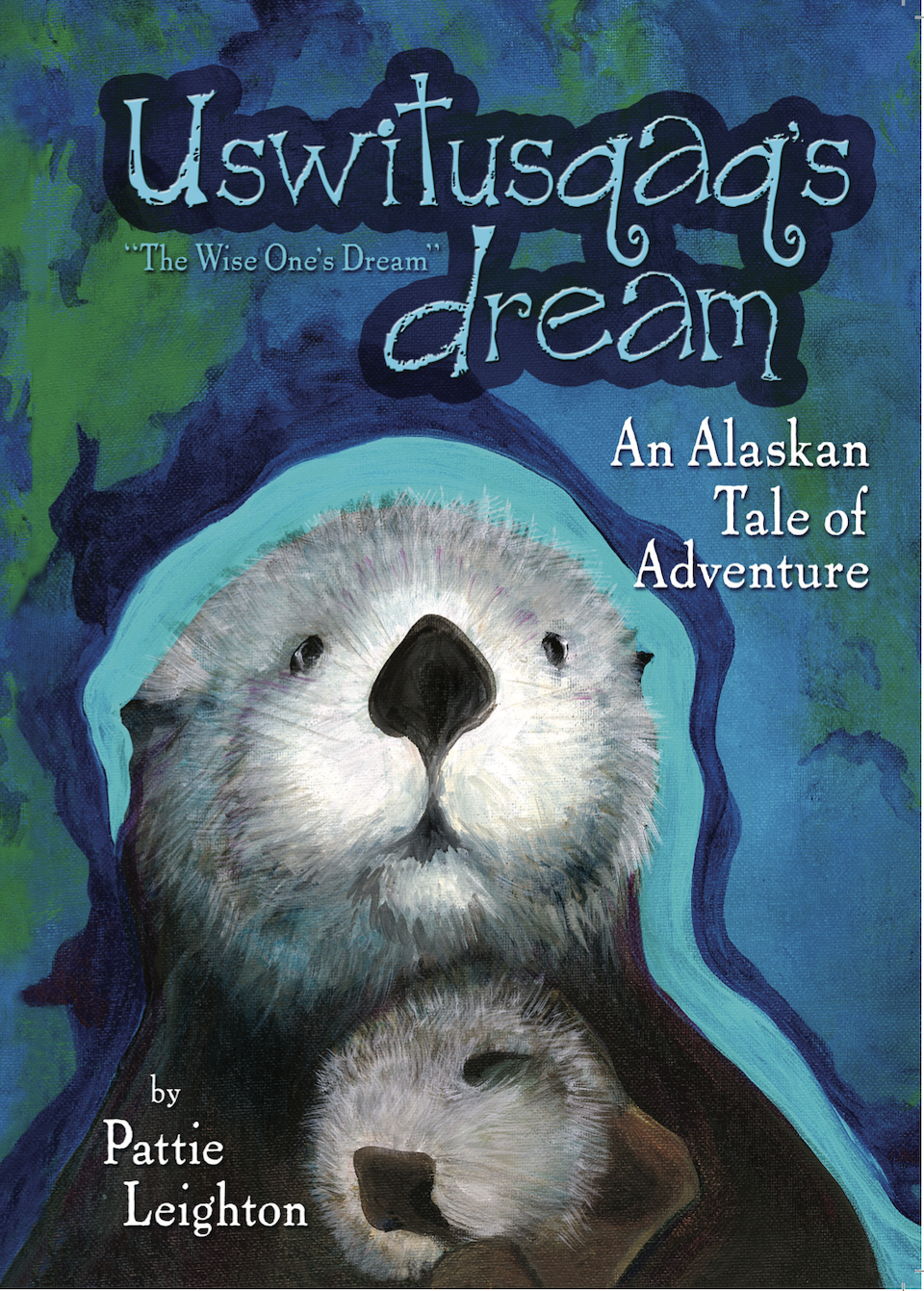
Uswitusqaq’s Dream
A shaman’s dream, a journey by kayak, sea otters, and an earthquake; these are the ingredients for Uswitusqaq’s Dream, a children’s novel about life on Alaska’s Kodiak Island in the 1800s. This charming story follows Alutiiq youth Kuuku and Tanqiq on a journey of self-discovery.
Traveling far from home the boys discover a hidden bay with a rare pod of sea otters. An injured pup offers the chance to learn more about otters, practice outdoor skills, and test the boys’ compassion and patience. Then an earthquake closes the entrance to the bay. How will Kuuku and Tanqiq return home? This exciting story features descriptions of Kodiak’s environment and details of Alutiiq culture and history.
Written by Pattie Leighton with cover art by Sarah Squartsoff. Published in 2011 by the Alutiiq Museum with support from the Alaska Humanities Forum. Electronic edition read by Dehrich Chya and produced with support from the Kodiak Island Borough School District READ project.

The Alutiiq Orthography: Kodiak Dialect
An orthography is a writing system for a language. It includes the alphabet — characters used to represent the language through a written form, as well as special symbols, spelling or writing rules, and any exceptions to those rules. Learn all about the rules for writing in Alutiiq with this detailed guide.
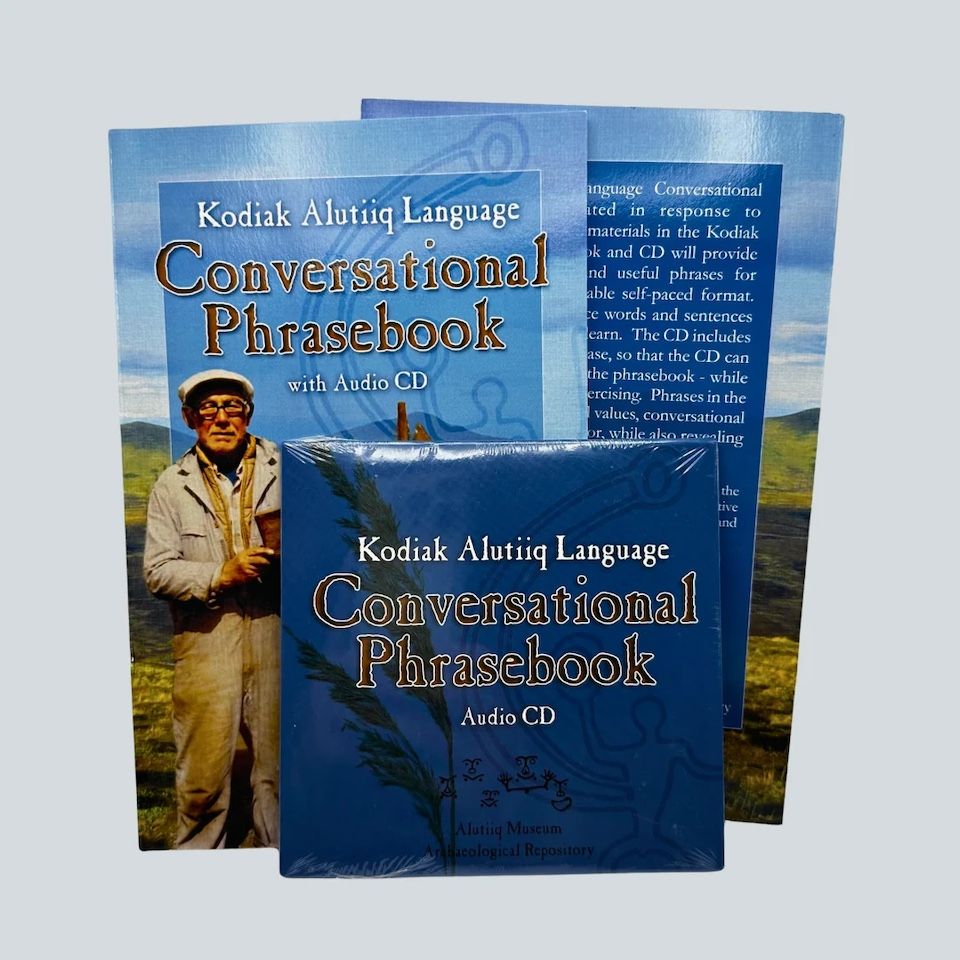
Kodiak Alutiiq Language Conversational Phrasebook
This book and CD provide language learners with relevant and useful phrases for everyday life in an enjoyable, self-paced format. Fluent speakers pronounce words and sentences for listeners to repeat and learn. The CD includes English audio of each phrase so that the CD can be used independently of the phrasebook. Phases in the book reveal Alutiiq cultural values, conversational topics, and traditional humor, while also revealing grammatical aspects of the language.

Neq’rkat — The Wild Foods Cookbook
Ptarmigan jerky. Kelp chips. Pickled Octopus. These are just a sample of the tasty recipes you will find in The Wild Foods Cookbook, a museum publication that highlights the preparation of locally harvested foods. This 68-page book explores Alutiiq cuisine from beverages and appetizers to side dishes, main courses, and deserts, illustrated with photos from the museum’s collections.
Qbooks
INTERACTIVE DIGITAL STORY BOOKS
These eight digital storybooks explore Alutiiq language and traditions with interactive features designed for use on a touch screen. Each is available as a free app on the Apple App Store. Recommended for elementary school students. This collection of books was produced by the Native Village of Afognak with assistance from the Alutiiq Museum. Find these and more Qbooks on the Alutiiq Language website.
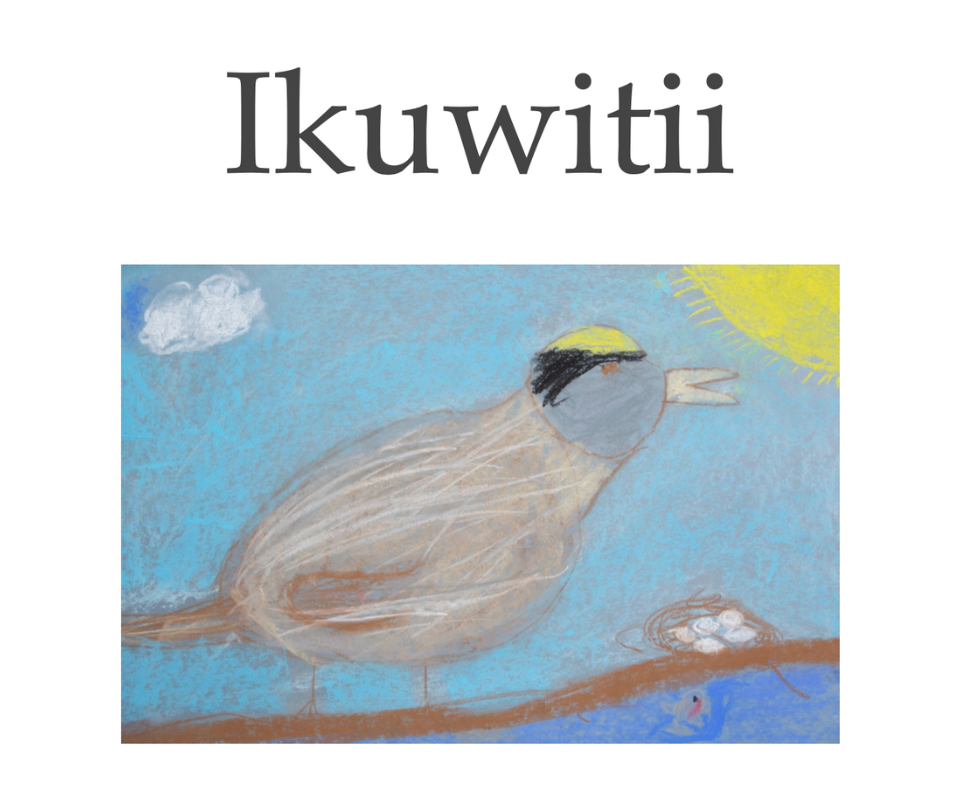
Ikuwitii—Golden Crown Sparrow
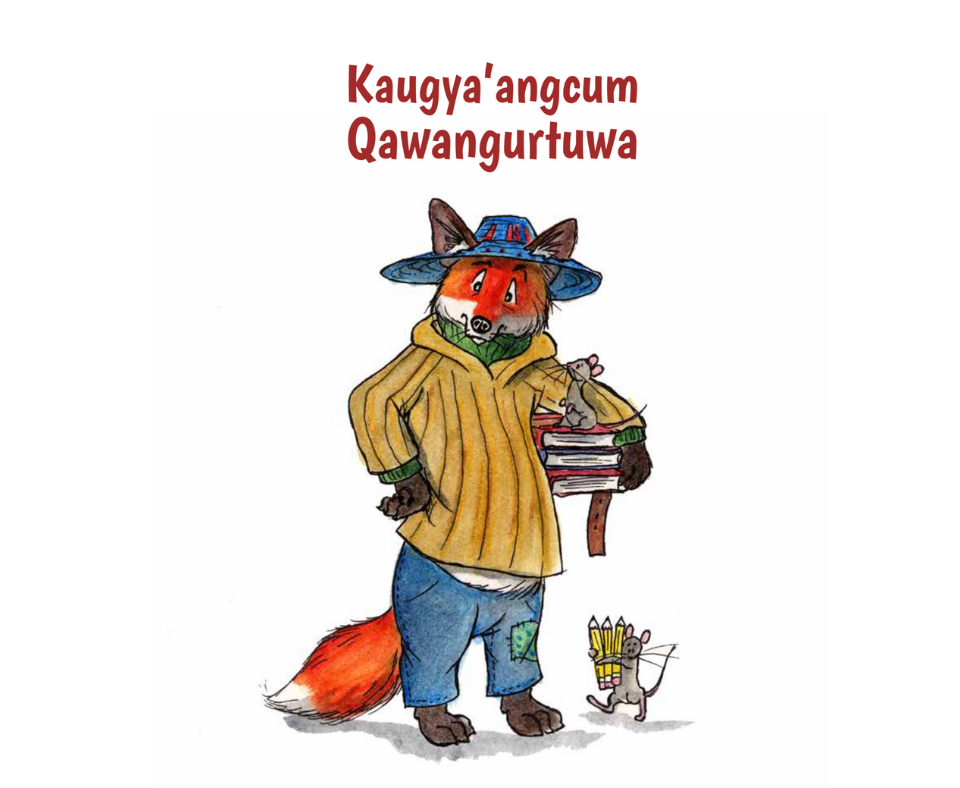
Kaugya’angcum Qawanurtuwa—Small Fox’s Dream
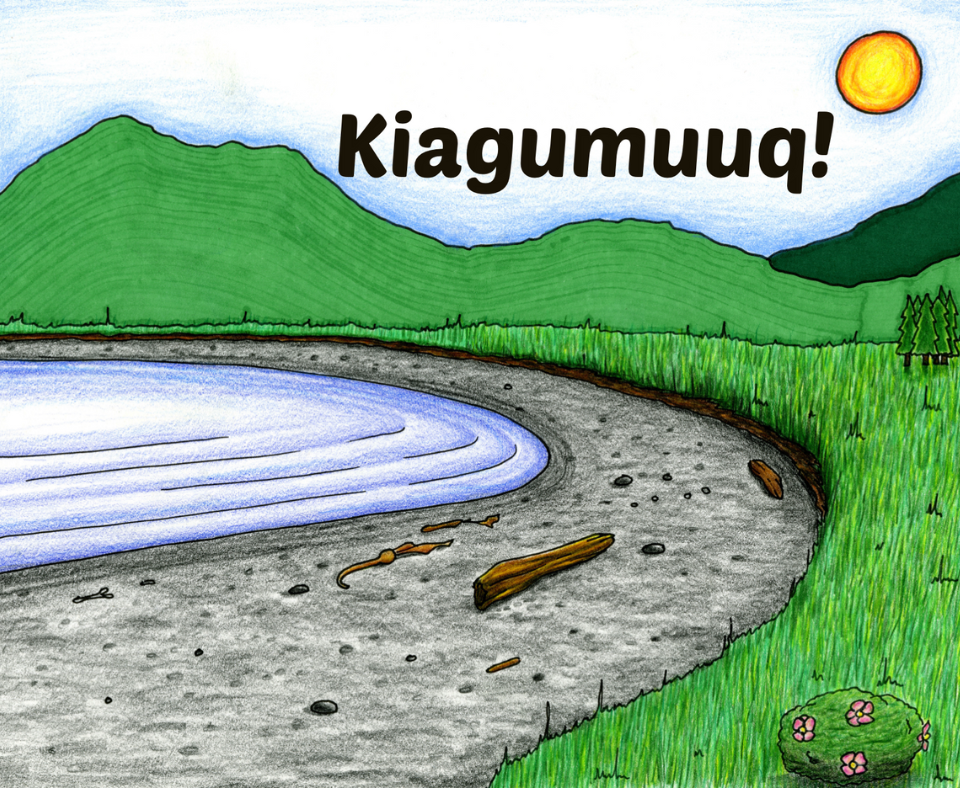
Kiagumuuq!—It is Summer!

Naken taitaartat alagnat?—Where Do Berries Come From?
